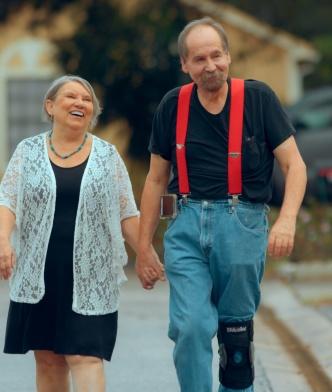Weather-Related Car Accident Statistics
Weather-Related Car Accident Statistics
- The Fee Is Free Unless You Win®.
- America's Largest Injury Law Firm™
- Protecting Families Since 1988
- 20 Billion+ Won
- 1,000+ Lawyers Nationwide
Free Case Evaluation
Porter Ranch Gas Leak
Jacob T. Rodgers v. City of Gainesville D/B/A Gainesville Regional Utilities
Estate of Frank Townsend v. RJ Reynolds, et al.
Morgan Stanley Data Security Litigation
Stephen Davis v. Levon Clark, Ricardo Williams, Marty Grifka and Derek Pak
McAdams v. Monier Lifetile, LLC
Coleman v. Martinez
Gold v. Lumber Liquidators
Clemmons, Patrick
Brink v. Ruiz

The attorneys featured above are licensed in Florida. For a full list of attorneys in your state please visit our attorney page.
Weather-Related Car Accident Statistics
Unfortunately, there is no getting around the fact that driving comes with inherent risks. You must always be on the lookout for unexpected hazards because car accidents are surprisingly common, even if you're a defensive driver. The majority of us will likely be in multiple accidents over the course of our lives, with varying degrees of severity. Most car accidents result from human error, and, to a lesser extent, faulty technology or mechanical issues are responsible for collisions. However, weather can either be a causing or contributing factor in many auto accidents.
We're going to take a look at weather-related car accident statistics and how crashes are either caused or made worse by weather conditions. Since fault is a crucial aspect in many car accident claims, we'll also look at your legal options when weather conditions are a consideration for your car accident.
Morgan and Morgan invite you to reach out today for a free case evaluation if you have been involved in a car accident through no fault of your own. While you may feel that your choices are limited, you have rights that deserve to be explored, and we may still be able to help you win compensation. With offices across the nation, our attorneys have successfully handled thousands of car accident cases involving poor weather.
Weather-Related Motor Vehicle Accidents Surpass the Dangers of Weather Disasters
When we learn of a tornado touching down in the Midwest or a hurricane battering coastal cities, we always think that the weather event is the most destructive aspect. However, weather-related car accident statistics reveal that driving in bad weather is the most deadly of all, with the number of fatalities surpassing those caused by hurricanes, flooding, and tornadoes. In an average year, the United States has about 5.8 million car accidents, with more than 1.2 million involving bad weather.
Late fall through early spring is the most hazardous because of the likelihood of encountering rain, ice, snow, and fog. However, weather hazards exist all year long. For example, the monsoon season in the southwest occurs during the hottest months. Motorists can quickly find themselves enveloped in blinding dust storms, torrential rains causing flash floods, and high winds.
Between 2007 and 2016, the United States Department of Transportation (U.S. DOT) reported an average of 5,376 deaths per year on the nation's roadways. In comparison, the number of annual deaths caused by hurricanes, tornadoes, floods, lightning strikes, and heat averages about 379. Surprisingly, heat is the most deadly weather-related factor.
When it comes to automobile accidents, however, wet pavement and rain are the top factors, followed by winter conditions and fog. Since rain occurs year-round, it's no shock that it would be the most dangerous element, racking up the most significance on the list.
Get answers to commonly asked questions about our legal services and learn how we may assist you with your case.
Morgan & Morgan
What Measures Can Drivers Take to Avoid Weather-Related Car Accidents?
Bad weather can be a significant risk when you get behind the wheel, and it increases your chances of getting into a car accident. However, many car accidents are avoidable if all drivers take the appropriate steps and monitor their own conduct. Still, not every accident can be prevented, so it's crucial you take action on your own. Here are a few examples of how you can prevent bad-weather car accidents:
- Don't drive unless absolutely necessary
- Slow down
- Maintain tires and purchase weather-appropriate ones when needed
- Remain focused, calm, and collected
- Check windshield wipers seasonally
- Clear snow and ice from the vehicle before driving
- Avoid using the cruise control feature on wet roads
- Turn fog or low beam headlights on in foggy weather (never use high beams)
- Turn lights on during snowfall and rain
- Increase space between you and the vehicle in front of you to allow for more braking time
- Don't brake suddenly if you begin to slide. Take your foot off the gas and turn gently in the direction of the slide while gently tapping on the brake
You may be forced to drive in bad weather for many reasons. You may have to get to your children, check on a loved one, or you may have a critical job like an emergency responder or emergency room nurse. Still, slowing down while driving in inclement weather is the easiest thing you can do to prevent an accident. In fact, drivers are expected to alter their speed to account for changing weather conditions. That means if you're driving in a downpour or snowstorm, reduce your speed to minimize the risk.
Suppose you live in a region where ice and snow are expected. In that case, you may benefit from practicing in an empty parking lot to get used to the effect these weather conditions have on braking, turning, and accelerating. By taking a few precautions, you may save yourself a lot of expenses, injury, and perhaps even your life or that of others.
What Are Additional Weather-Related Car Accident Statistics?
The Federal Highway Administration offers the following additional weather-related car accident statistics. However, it's important to realize that bad weather can play a role in road safety at any time of the year.
- More than 70 percent of our national roads are located in snowy regions, which may get more than five inches of snowfall yearly on average.
- Almost 70 percent of the U.S. population inhabits these snowy regions.
- Snowy, slushy, and icy roadways kill about 1,300, and another 116,800 are injured each year.
- Snow and sleet storms account for 900 deaths, and another 76,000 people sustain injuries.
- Twenty-four percent of weather-related car accidents involve snowy, icy, or slushy roads, with another 15 percent taking place during active snow and sleet conditions.
- Highway speeds are reduced by 3 to 13 percent during light snowfall and decreased by 5 to 40 percent during heavy snowfall.
- Non-highway travel speeds decline an average of 30 to 40 percent when snow, ice, and slush are present.
- The use of road salt reduced 4-lane road crashes by 93 percent
- Fog accounted for 25,451 crashes, 464 fatalities, and 8,902 persons injured during a ten-year average from 2007-2016
- Wet pavement accounts for 76 percent of weather-related fatalities.
- Weather events can reduce the effectiveness of traffic signal timing schedules.
- In 2019, 8 percent of fatal large truck crashes occurred in the rain, while 1.9 percent occurred in snow. Another 1.9 occurred in limited visibility conditions such as fog.
Why Is Driving in the Rain so Dangerous?
As you've learned, wet pavement and rain create the most hazardous driving conditions of all. Here is why:
Low visibility - Heavy downpours can significantly impact visibility, making it difficult for drivers to see hazards and accurately calculate distances.
Hydroplaning - A vehicle hydroplanes when tires lose traction because of wet road surfaces, causing loss of control. The first ten minutes of rainfall are the most dangerous because oil and grease from the roadways cause a slick film to emerge.
Speeding - Drivers frequently fail to adjust their speed to account for rain, making it harder to brake and increasing the chances of hydroplaning.
Distracted driving - Driving in the rain is stressful, and motorists may be searching for weather and traffic updates on their phones or car radio.
Who Is at Fault in a Weather-Related Car Accident?
You may not expect it, but car accidents often have more than one cause. In some instances, both drivers share a measure of fault. Still, other accidents can include additional culprits like poor road maintenance. However, one thing is certain, whichever party is most responsible for the accident usually bears the most financial liability, even when the weather plays a part. Finding fault in weather-related accidents is typically more complex than in accidents where the weather had no influence.
Driving in bad weather increases your responsibilities. Regardless of speed limits, you're expected to adjust to the conditions. That means if you decide to go driving in a thunderstorm and come up to a stoplight and can't control your vehicle, instead hydroplaning through the intersection, you may be responsible for any damages despite your best efforts and intention to stop.
It doesn't matter that drivers can't control the weather or whether the rain contributed to the accident. As far as laws and insurance companies are concerned, drivers make a decision to take a risk when they get behind the wheel and have the choice to alter their driving behavior to accommodate the weather. While this may sound unfair to some drivers, negligence is generally defined as failure to take proper care in doing something. Furthermore, negligence is the basis of any personal injury case.
How to Handle a Weather-Related Car Accident?
You can get into a weather-related car accident regardless of caution. However, the steps you take immediately afterward can make a big difference. Here are guidelines to protect your safety and your rights:
Call 911 - Many states require you to report any motor vehicle accident, but a police report can also be valuable evidence. It's essential to alert the authorities so that they can collect all the details and pertinent facts of the accident.
Stay in your vehicle - Low visibility makes a weather-related accident more dangerous. Stay in your vehicle until help arrives.
Seek medical care - Medical records are the foundation of many personal injury claims. Your injuries aren't seriously considered in an insurance settlement without medical documentation.
Contact Morgan and Morgan - After you look after your health, get in touch with one of our car accident lawyers immediately. We can work to preserve evidence, protect your rights, and ensure you get fair compensation for your losses.
How are Drivers Responsible for Bad Weather Car Accidents?
Despite weather or any other road conditions, drivers are bound by a duty of care to take reasonable measures to ensure the safety of others. It doesn't matter if you're traveling the speed limit; if the weather or visibility conditions are poor, drivers have a duty to adjust.
Weather is a factor in about 22 percent of yearly car crashes, which means insurance companies and car accident lawyers alike have a lot of experience determining liability. Usually, the following will be examined to conclude which party is liable:
- Whether a driver was traveling at a reasonable rate of speed for the weather conditions
- Whether a driver was following a lead vehicle at a safe distance
- Whether a driver could have taken any measures to avoid the collision
- Whether the weather event was predicted or unexpected
Generally, if a motorist could have taken actions to avoid the accident but failed, they would be liable to pay for any damages. Still, a driver could use an "Act of God" defense in some extraordinary instances. For example, flash floods can happen in an instant, even when it's not raining anywhere near the proximity. Suppose a driver began to advance through an intersection that a second ago was dry. Suddenly, their car is violently pushed back into the car behind them by a powerful flash flood current. In that case, they may have a successful defense because there was no way to prepare for or prevent the crash.
When you're wondering about weather-related car accident statistics and how it affects your recent wreck, regardless of the circumstances, it makes sense to explore all of your legal options. Especially if you suspect poor road maintenance may have contributed to the crash. It may have been a pothole, crumbling pavement, or insufficient signage. When poor road conditions are coupled with bad weather, it creates a recipe for disaster. Likewise, another driver can be found negligent if they violate traffic laws, such as speeding or driving while impaired.
Morgan and Morgan are always here to help. We will work to investigate all aspects of your accidents to recover the maximum compensation. Contact us today for your free case evaluation.
How it works
It's easy to get started.
The Fee Is Free Unless You Win®.
Results may vary depending on your particular facts and legal circumstances.
Step 1
Submit
your claimWith a free case evaluation, submitting your case is easy with Morgan & Morgan.
Step 2
We take
actionOur dedicated team gets to work investigating your claim.
Step 3
We fight
for youIf we take on the case, our team fights to get you the results you deserve.






